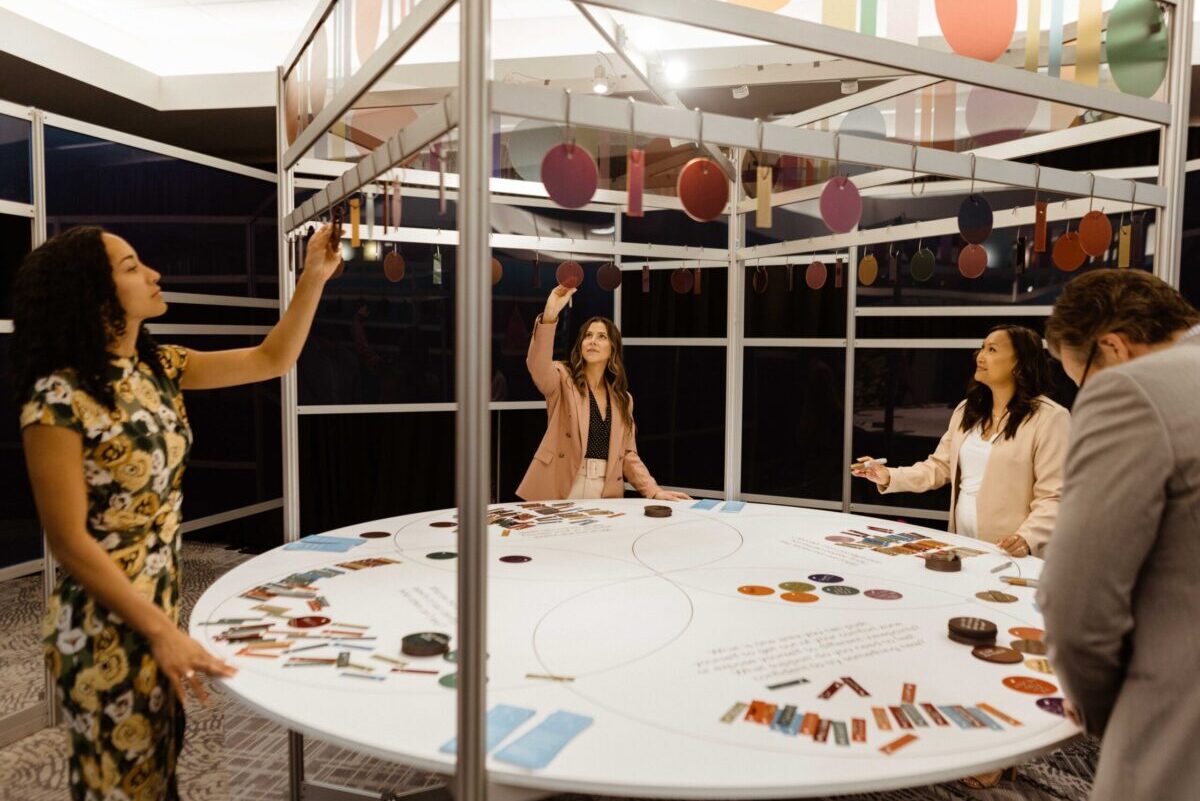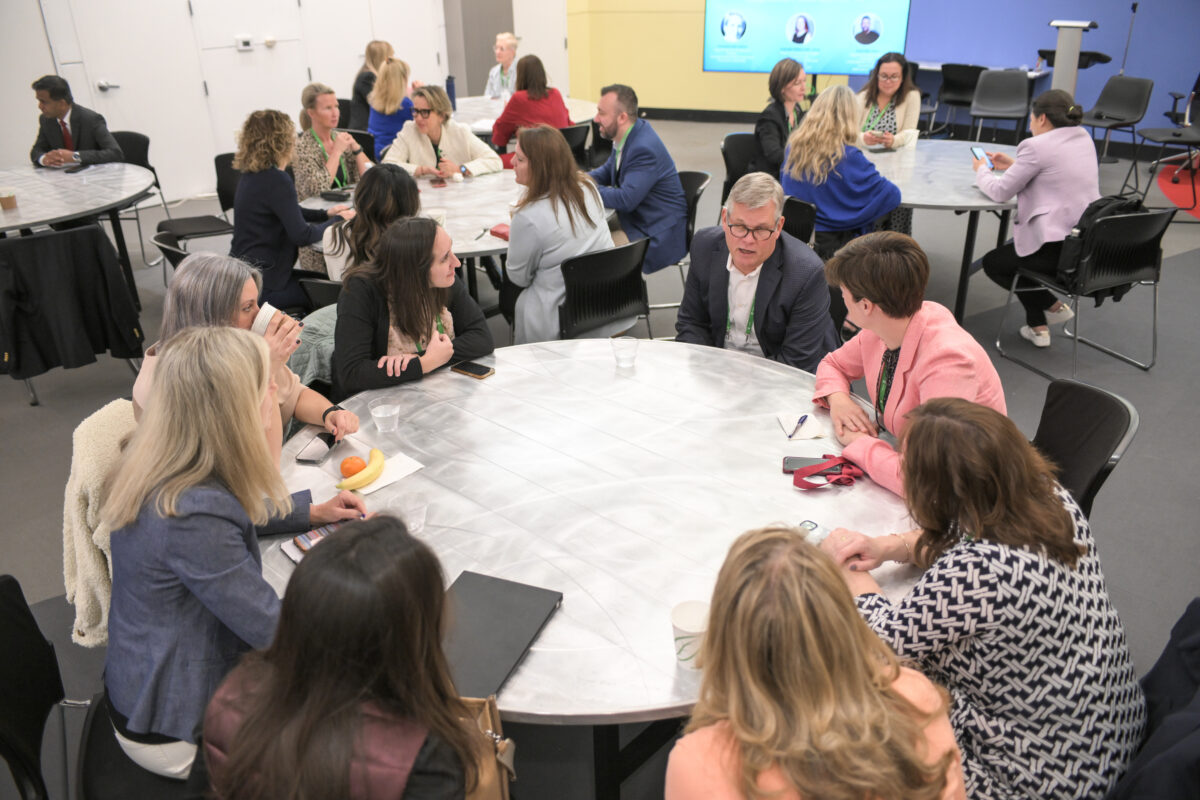Skift Take
Belonging is a focus of the “Guiding Principles in Experience Design” study released during Marriott’s Association Masters Customer Conference. The gathering showcased both the benefits and challenges of fostering belonging at meetings and events.
Marriott’s Association Masters is an annual customer conference. This year it gathered 314 association planners and 456 Marriott associates at the reimagined Sheraton Phoenix Downtown. It’s a way for the company to thank its customers and try new things. The main focus was belonging and how to create gatherings that create just that.
The conference featured educational sessions complemented by a breadth of optional activities to choose from. Among the options were a Hummer desert tour, stand-up paddleboarding, rafting, and a curated visit to the nearby Heard Museum.
Food and beverage functions showcased farm-to-table cuisine and produce from a farm used for a community service activity. Expert staff cut fruit to order at breakfast allowing participants to engage with their food preferences while reducing waste.
The Challenges of Fostering Belonging
Despite the innovative and engaging event design, the event struggled to create the sense of belonging it was themed around. It became a living case study of the difficulty of implementing belonging-centered design practices.
“I felt really disconnected as everyone seemed to be standing in small groups conversing amongst themselves, and I just didn’t know how to join them,” said one of the first-time attendees.
Walking into a crowded reception where you don’t know anyone isn’t easy, and this is why many conferences create buddy programs.
Tammy Routh, senior vice president of global sales at Marriott International, agreed that this must be rectified for next year’s conference. Gatherings for first-timers have been held in the past but not this year. Why? “Because 40 percent of attendees at this conference were first-timers,” according to Julius Robinson, chief sales and marketing officer, U.S. and Canada, Marriott International.
Change Takes Time
“As an industry, we are not practiced yet at surveying our audience’s needs before an event or planning an experiential set of journeys based on belonging. We need to look at how to make receptions connective spaces,” said Naomi Clare Crellin, founder of Storycraft Lab, a company focused on understanding audiences.
Megan Henshall, CMP, DES, global events strategist, Google, committed to belonging and inclusion, was also on hand. Attendees were excited to get her insights about how they can support their member communities.
What will help is a new Belonging Index that Google is creating in partnership with David Allison and Storycraft Lab. A work in progress, which will gather feedback to help bridge belonging data to design practice, said Henshall.
Testing Six Truths
The Guiding Principles in Experience Design, created through a partnership between Storycraft Lab, Marriott, PCMA, and CEMA, came to life at the conference with the help of an activation that tantalized the senses and tested six truths.
Attendees started by answering questions that helped determine their guiding energy. Based on the result, a map helped them navigate the activation. They ended up in a design lab where they discussed how to apply these principles to their meetings and events.
The research synthesized six guiding principles intended to drive experience:
- Exploring Identities: The ability to find one’s individualized uniqueness as well as overlap with others is invaluable. These intersections are fundamental to one’s ability to connect.
- Architecting Choice: Audiences want adequate support and resources to make clear and informed choices.
- Designing for Belonging: A sense of belonging and inclusion should be a central mission for the experiences that event strategists create. Marriott has collaborated with the Google Experience Institute (XI) on The Neu Project to enable more neuro-inclusive meetings and events with this principle in mind.
- Value of Values: Audiences search for experiences that provide value beyond a monetary one, prioritizing elements like sustainability, inclusion, community engagement, and time.
- Emotional Data: Event strategists must discover how to leverage emotional data, measure it consistently, and analyze it effectively. Audience segmentation tools use personalization to create dialogue and encourage preference sharing. When used pre-event as a vehicle for experience design, they can demonstrate how the emotional data collected has been used to create better experiences for the audience.
- Power of Play: Playing with something, breaking it apart, and putting it back together creates opportunities for creativity and collaboration.
Younger Audiences Have Nuanced Expectations
These guiding principles are especially poignant today as three years of rapid retirement have resulted in younger attendees who are only interested in attending events that foster belonging, create community, and generate meaning.
In addition, they want sessions that are shorter in duration than in the past. Routh felt the sessions at this year’s Marriott Association Masters were too long based on her observations of the audience. She plans to recommend shorter sessions next year to keep attention piqued.
Expectations have also shifted. Today’s younger attendee wants experiential and respectful experiences of the remote working world that is today’s reality. With many corporate offices shuttered and fewer opportunities to meet, people want personalized experiences that provide flexibility, inclusivity, belonging, and some infusion of culture. The Guiding Principles in Experience Design will help.
Photo credit: This activity helps explore identities by examining visible and invisible aspects of one's identity.





